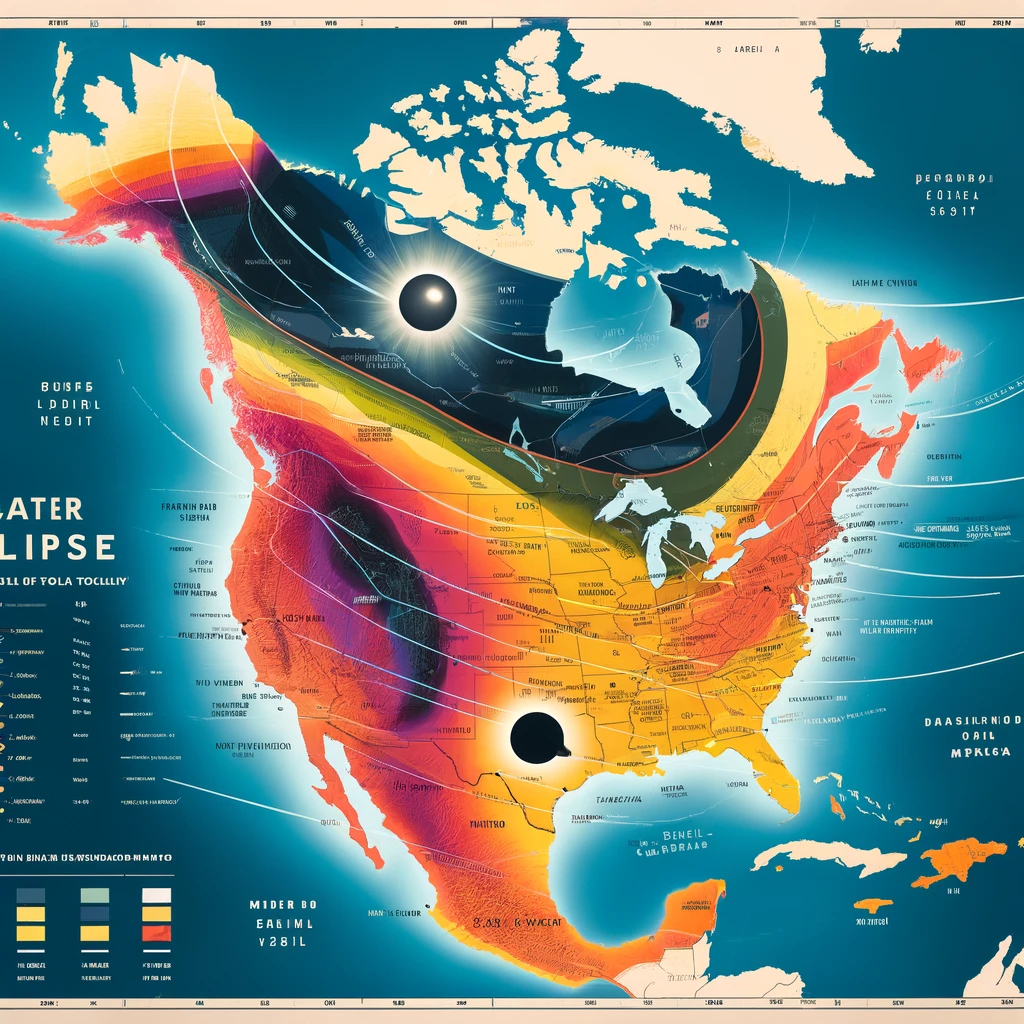
The 2024 solar eclipse is a highly anticipated event, with a path of totality that carves a significant swath across North America, offering a unique spectacle to millions. This celestial phenomenon, where the moon completely obscures the sun, will create a narrow band of totality, providing observers within this path a rare and awe-inspiring experience of daytime darkness.
The path of totality for the 2024 eclipse will first touch land in Mexico, then travel through the United States, and finally, move into Canada. In Mexico, the eclipse will begin in Sinaloa, crossing cities like Mazatlán and Durango, offering viewers there a dramatic view of the eclipse as it makes its first landfall.
As the shadow of the moon moves northward, it will cross into the United States, sweeping across states from Texas to Maine. Major cities within the U.S. path of totality include Dallas, Little Rock, Indianapolis, Cleveland, and Buffalo. Observers in these areas will experience complete darkness for up to four minutes, a surreal and unforgettable spectacle.
After crossing the U.S., the eclipse will enter Canada, moving through Ontario, Quebec, New Brunswick, Prince Edward Island, and Newfoundland. Each region will provide a unique vantage point for this astronomical event, with varying durations of totality depending on the location’s proximity to the central path of the eclipse.
For those outside the narrow path of totality, a partial eclipse will be visible across a much broader area, covering all of North America, parts of South America, and some regions in western Europe and Africa. During a partial eclipse, the sun is only partially covered by the moon, creating a unique visual effect but not the complete darkness experienced during totality.
To fully appreciate the 2024 eclipse, it’s essential to understand where and when to observe it. Maps and visual aids can significantly enhance this understanding, showing the exact path of totality and the timings for various locations. These resources are invaluable for planning where to be to experience the total eclipse, as the phenomenon is highly localized and time-sensitive.
The eclipse’s path also offers a unique opportunity for communities along the route to engage with this natural spectacle. Local events, educational programs, and viewing parties are being planned to celebrate the eclipse, highlighting the unifying power of such astronomical events.
In conclusion, the 2024 solar eclipse presents a not-to-be-missed opportunity for those in its path to witness one of nature’s most awe-inspiring displays. Whether in the path of totality or viewing a partial eclipse, the experience promises to be a memorable one, offering a moment of wonder and a reminder of the incredible phenomena that occur in our universe. As the event draws near, preparedness and understanding of the eclipse’s path will be key to fully enjoying and appreciating this celestial spectacle.